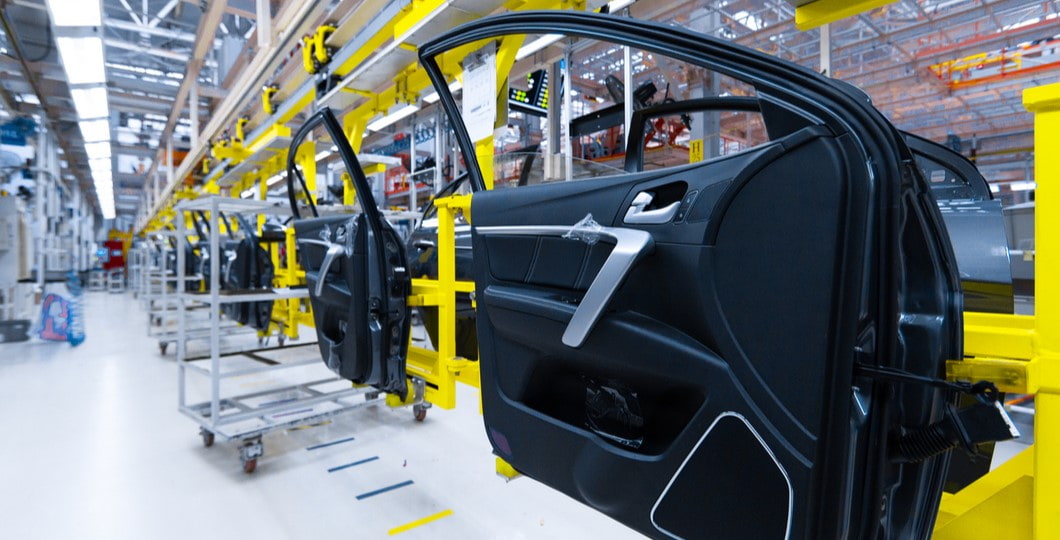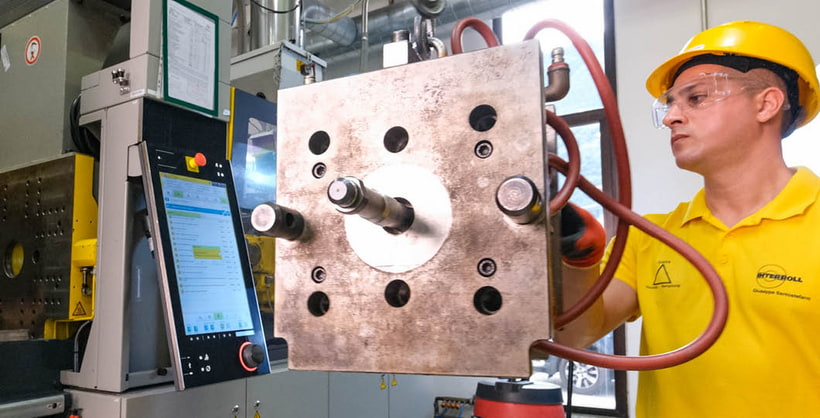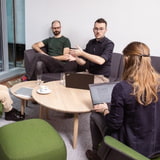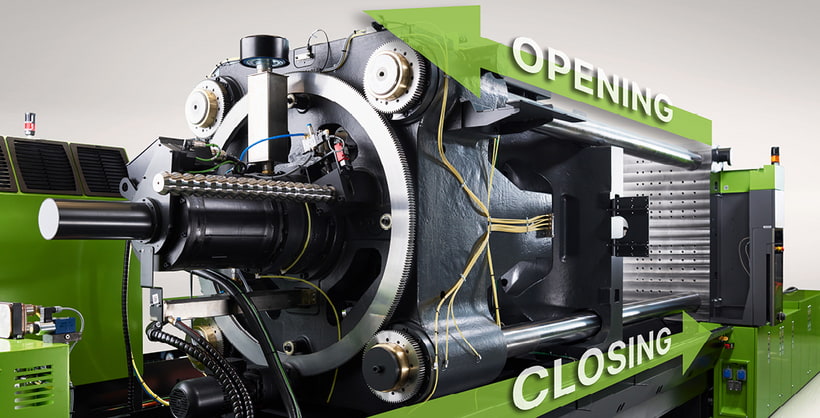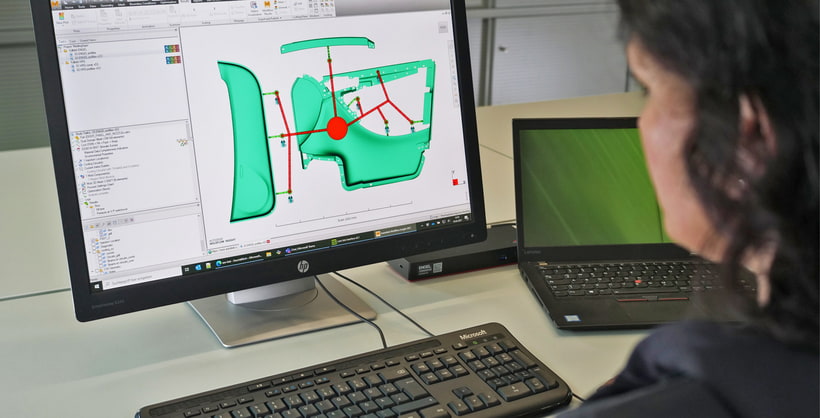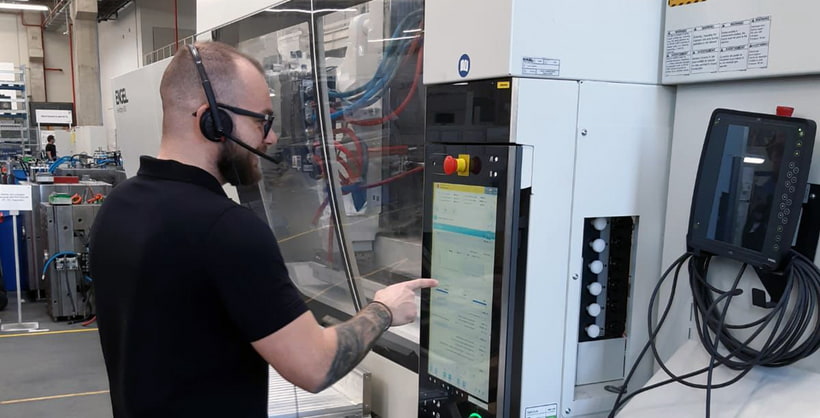Software for plastic parts development
What was the idea and goal behind the community project?
In the design process for a new product, one usually exchanges information about the project with all partners relatively late in the course of the project. This usually happens only at the machine. Borealis , Oerlikon HRSflow and ENGEL wanted to show that this exchange of know-how can be moved to the early design phase.
For this purpose, a centralised workflow was set up to which all partners can simultaneously contribute their know-how in the development of the plastic parts. The aim was to move from a sequential process to a cloud process that everyone implements and optimises together.
In addition, the aim was to check how accurately the simulation could be transferred from the Autodesk Moldflow® page to reality. In short, the goal was this transfer to the machine, without extensive manual readjustments, while adhering to the given part specification.
What was the starting point and what tools were used?
The theory was tested on real components that were to be produced using a family mould with 3 very differently sized cavities:
- an inner door panel
- a map pocket with integrated loudspeaker grille as a special challenge
- on a small reinforcing element
The particular difficulty arose from the weight difference of 1:11 from the smallest to the largest component.
Borealis has provided the material Daplen™ EE001AI. This is a material that is often used for vehicle interiors. Every other injection moulder receives it exactly like this as standard.
From Oerlikon HRSflow came the family mould including hot runner system. This is a servo-driven 8-port system that allows the stroke and force of each individual valve needle to be precisely preset during the opening and closing phases. The result is precise, easy-to-use, flexible control of pressures and flow rates at each individual gate during the injection process. This allows each individual cavity to be filled individually.
ENGEL provided the duo injection moulding machine for the project, as well as detailed characteristic data, such as geometries of the nozzle used.
Everything was transferred via ENGEL's data interface sim link. This is a tool that connects the simulation during the development of the plastic parts and the real production. The 3 most important sim link functions are:
- Modification of the simulation against the actual specifications of the machine
- Creating a setting data set from the simulation data
- Reloading process data from the machine into the simulation to sustainably increase the quality and expertise in the simulation
Special attention was also paid to temperature control with e-temp, e-flomo and the intelligent temperature control solution iQ flow control.
What was the process of the project like?
Initially, a lot of data went into the project:
- the know-how of the hot runner used
- the material characteristics
- the data for the machine from ENGEL for the sampling
- the tool side such as the cooling
The first sampling was not done on the machine, but virtually and was thus part of the development process of the plastic parts. The entire processes and their influence on the parameters were considered.
Subsequently, the setting parameters of the Autodesk Moldflow® simulation were converted to the machine and optimised.
The data generated from this was transferred directly to the machine.
This happened in the following way:
- The simulation parameters are exported from Autodesk Moldflow® and transferred to the sim link application in the ENGEL customer portal. All information about the machine is available in the customer portal. This means that the simulation can be checked against the actual specifications of the machine and adjusted.
- In addition, sim link generates a proposal for the setting data from the simulation, which can be transferred to the machine. This eliminates the step of manual data entry.
- When the developed plastic parts are actually produced on the machine, the associated process data are returned to the ENGEL customer portal and thus to Autodesk Moldflow®.
This closes the information flow and the simulation is now comparable with real data.
Read more about the advantages of a data interface between injection moulding simulation and machine.
What is the outcome of the project?
The joint project has delivered very good results. After a filling time of about 4 seconds, the almost identical filling level is achieved in both the simulation and in reality. Thus it is clear that the simulation used in the development of the plastic parts is an excellent basis.
In the project, it was also possible to greatly accelerate the process setting. Whereby the process technology had to be further optimised in some places, as the simulation does not cover all process values.
You can find out more details about the project here in a video by Markus Kralicek, Stephan Berz and Hannes Zach.
What are the advantages of using digital solutions in the development phase of plastic parts?
A clear advantage is the time saved, as time-consuming tool changes are avoided.
It is also possible to see during the development of the plastic parts whether the machine is suitable for the intended product. A smaller machine, if available, may be sufficient. This can save energy and increase efficiency in production.
In addition, the number of necessary setting cycles is reduced by the setting data suggestion created from the simulation. This leads to fewer rejects and lower energy consumption during initial sampling.
The cooperation and communication between the production specialists and the simulation engineers is improved. Both sides learn from each other.
Can the simulation from the product development phase of plastic parts now be transferred to the real world?
Yes, the joint project showed that the actual real production was almost identical to the simulation.
Already during the virtual development of the plastic parts, possible problems in the settings and wrong decisions in choosing the right machine could be prevented.
The simulation was easily and reliably transferred to the real machine using sim link. The result was ideal patterns of the injection moulded parts.
Do you still have questions about developing plastic parts with digital solutions?
We will answer all your questions.
Would you like to experience our digital solutions live?
Visit us in October at K 2022 in the ENGEL Digital Solutions Area. You can find more information about our K trade fair appearance here.
We look forward to seeing you!

Also visit the live presentation " On the way to the digital process twin" at the Oerlikon booth to learn more about this joint project from the project partners.
- When:
Thursday, 20.10.2022, 16.00
Tuesday, 25.10. 2022, 16.00 - Where:
Oerlikon exhibition stand
Hall 1 / D10
More about our products from the article
sim link
The data interface between simulation software and injection moulding machine combines simulation and real production.

